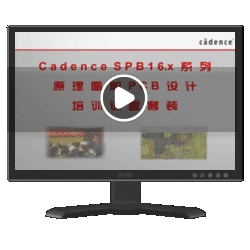- 易迪拓培训,专注于微波、射频、天线设计工程师的培养
焊盘电气类型:Load、Source和Terminator 作用?
编辑原因:辅助修改标题。原标题:protel99
设定焊盘在网络中的电气类型,包括Load(负载焊盘)、Source(源焊盘)和Terminator(终结焊盘),这三张电气类型有什么区别?
从字面上理解是自动布局规则中会起作用。
(因接触电路相对简单,几乎没有用过自动布局。但在复杂的设计中,不结合自动布线是不可想象的事情)
如果把上面的按 意译 来翻译 是否 比较好理解?
Source(起点)、Load(中间点)、Terminator(终点)
在AD的帮助文件中是这样描述这个参数的,大概意思是指这个选项主要用于连线的拓扑结构上。
在Daisy chain拓扑结构上也有描述:
http://techdocs.altium.com/display/ADRR/PCB_Pnl-PCB((PCB))_AD
Daisy Balanced - this topology divides all the loads into equal chains, the total number of chains equal to the number of terminators. These chains then connect to the source in a star pattern. Multiple source nodes are chained together
Daisy Mid-Driven - this topology places the source node(s) in the center of the daisy chain, divides the loads equally and chains them off either side of the source(s). Two terminators are required, one for each end. Multiple source nodes are chained together in the center. If there are not exactly two terminators the Daisy-Simple topology is used.
为什么一般把焊盘都设为load型的?
可以把load型认为是既可以作为输入也可以作为输出
Cadence Allegro 培训套装,视频教学,直观易学
上一篇:求助Altium designer 16 如何定义PCB板形状?
下一篇:AD16.0.5在WinXP,Win7和Win10下的问题

